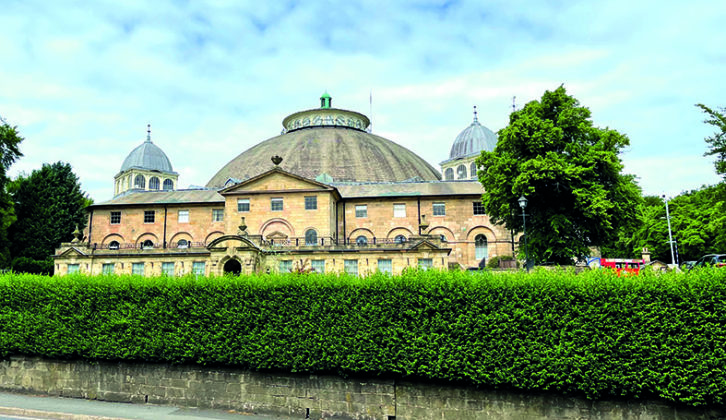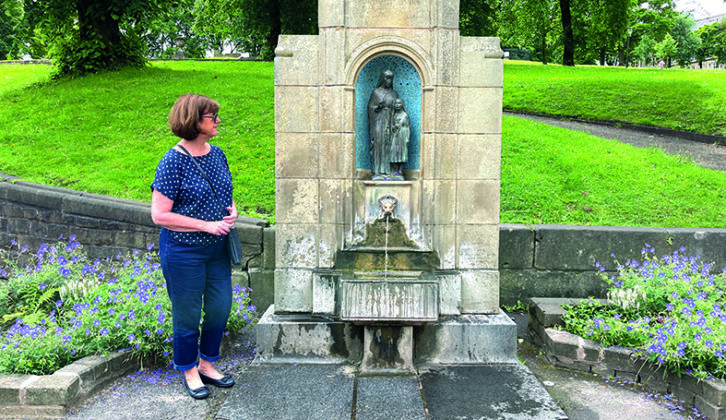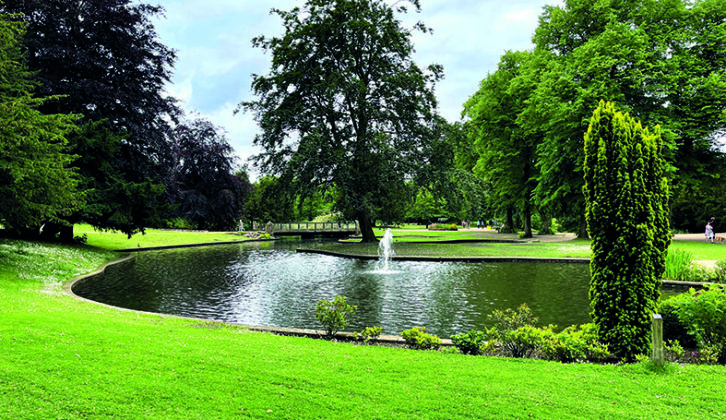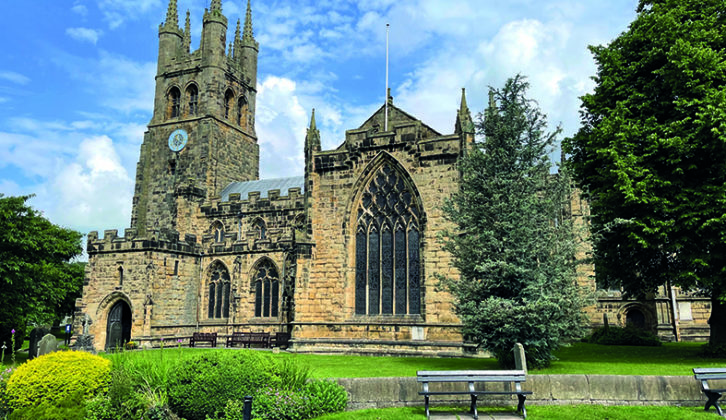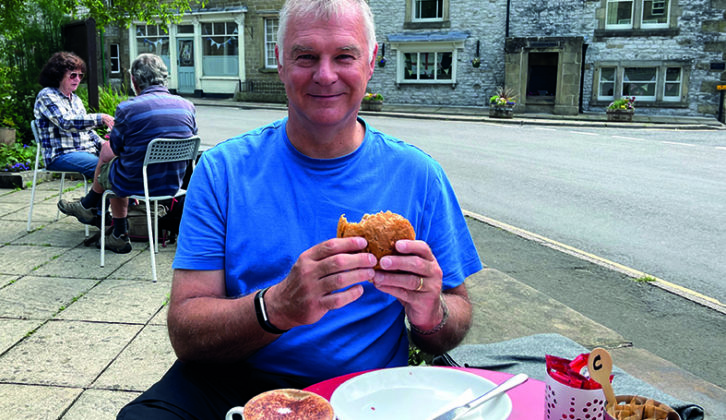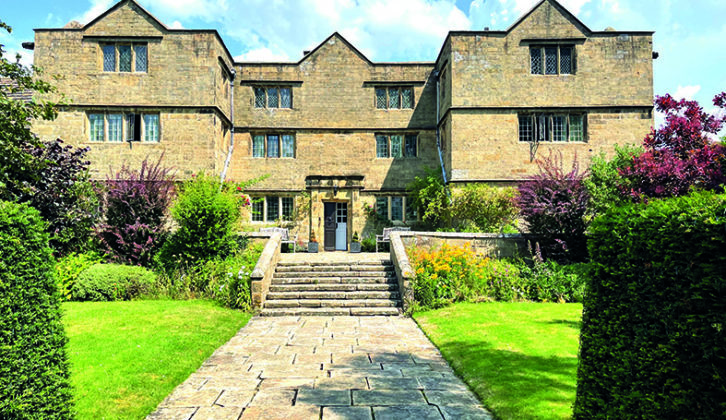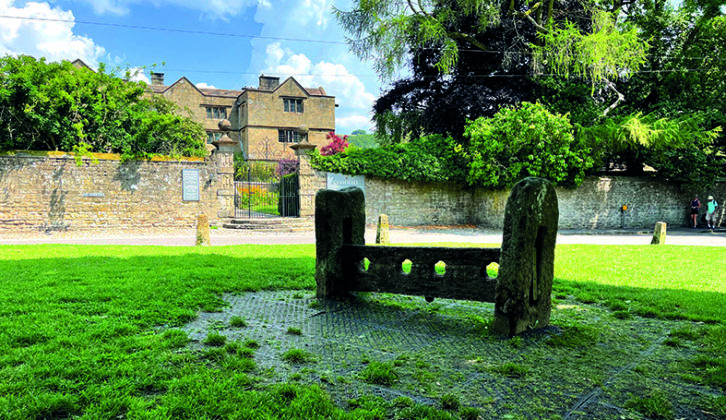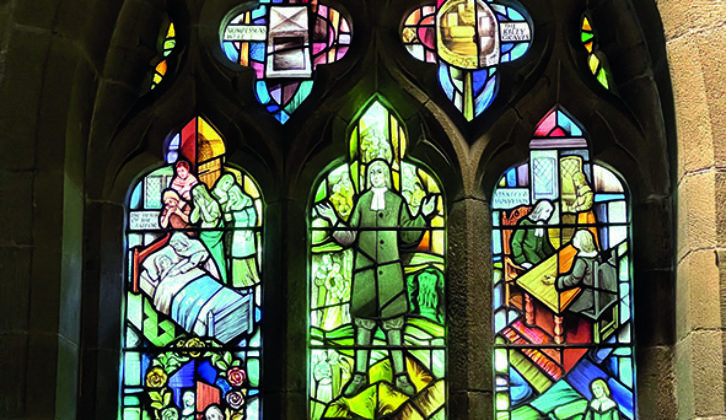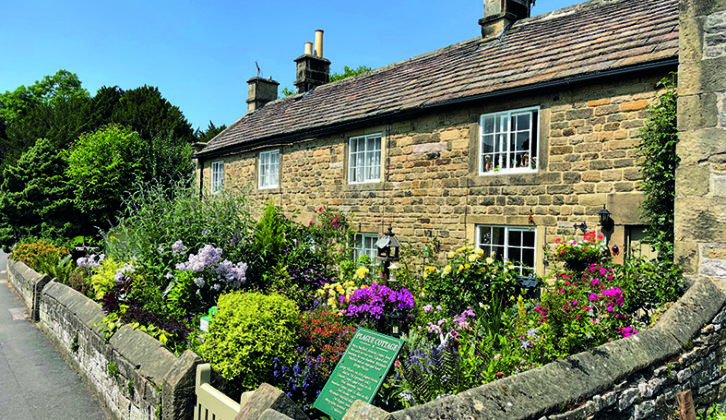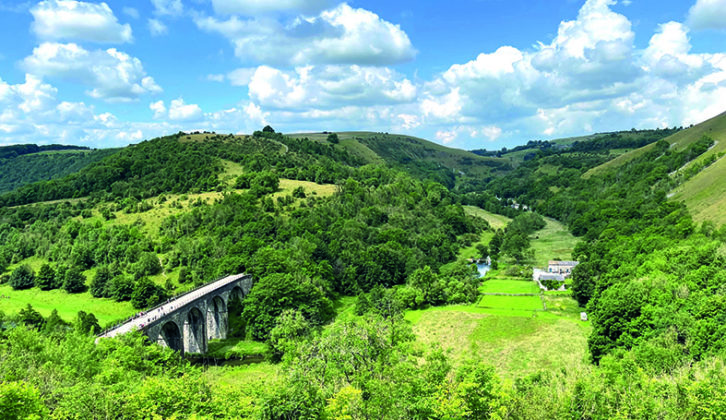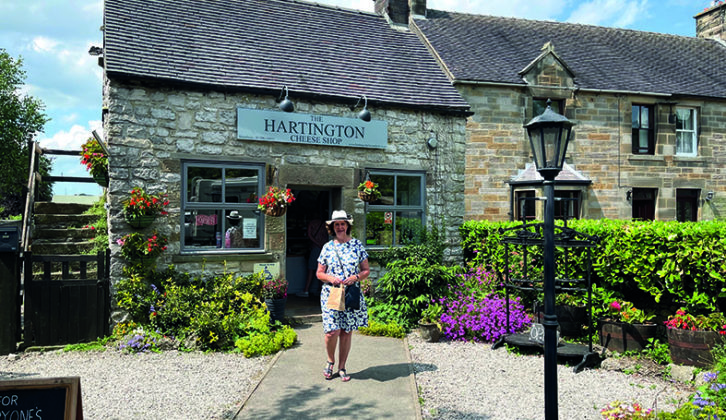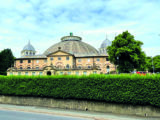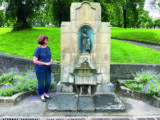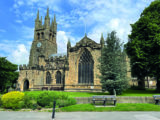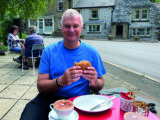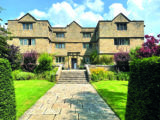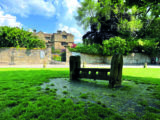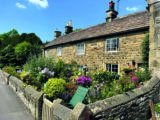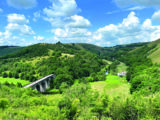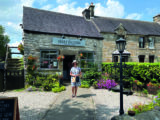Earlier in the year, when we were dreaming of the time when we could get out and about with the ‘van again, friends of ours, Mike and Janet, got in touch and asked if we’d like to meet up for a few days. They have a caravan and suggested Beech Croft Farm Caravan Park & Campsite, near Buxton in the Peak District.
Being local to the Peak District, we’re very familiar with the tourist hotspots (Chatsworth, Bakewell and Hope Valley, to name just a few) and try to avoid them at popular times – it can be a nightmare making the short journey to visit relatives in Hope Valley at weekends – so we felt that it would be good to visit a few places that are a little off the beaten track.
Relaxing in the sun
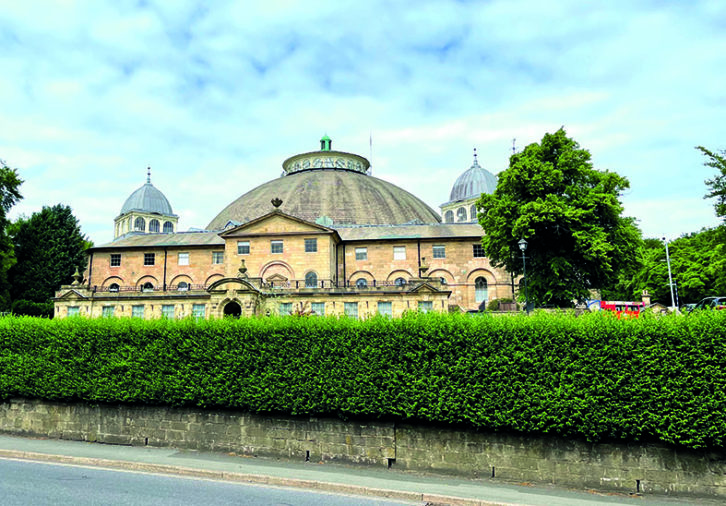
The day duly arrived and after making the easy hour’s journey from home, we were welcomed by the very friendly staff at Beech Croft Farm, which is in the hamlet of Blackwell , some five miles to the east of the spa town of Buxton (the highest market town in England, an honour it shares with Alston, in Cumbria!).
After setting up on one of the spacious pitches on the terraced site, we relaxed in the sunshine, enjoying a beer (or two) with Mike and Janet, celebrating the fact that we were out and about on tour again.
Next morning, Kay and I decided to go and explore Buxton, as it’s been a while since we visited the place. Buxton is well known for its Georgian architecture and Buxton Water, and strolling around, we soon spotted the Buxton Crescent Spa Hotel.
Built in the 1780s by the Duke of Devonshire, this imposing mansion once housed two hotels. Now recently refurbished, this architectural masterpiece is in the shape of a crescent, as its name suggests. Facing the Crescent, we’d had our backs to the Buxton Visitor Centre, which itself is housed in an old Victorian Pump Room.
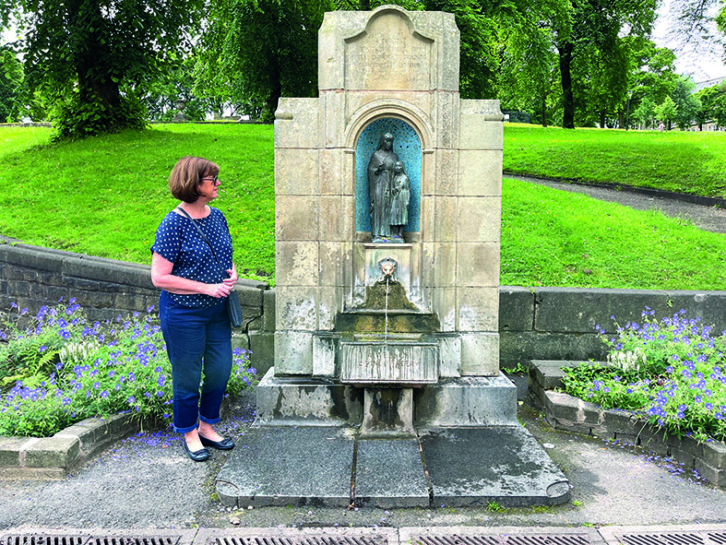
St Anne’s Well is just to the side of the Visitor Centre and judging by the queue of people filling up bottles and flasks, the warm (27°C) natural mineral water remains as popular today as it was back in the 16th century, when an Act of Parliament ruled that a free supply of spring water must be provided for local residents. Of course, bottled Buxton Mineral Water is also commercially available nowadays.
After a wander in the Pavilion Gardens, walking past Buxton Opera House, we found the Devonshire Dome (not that it’s hard to find).
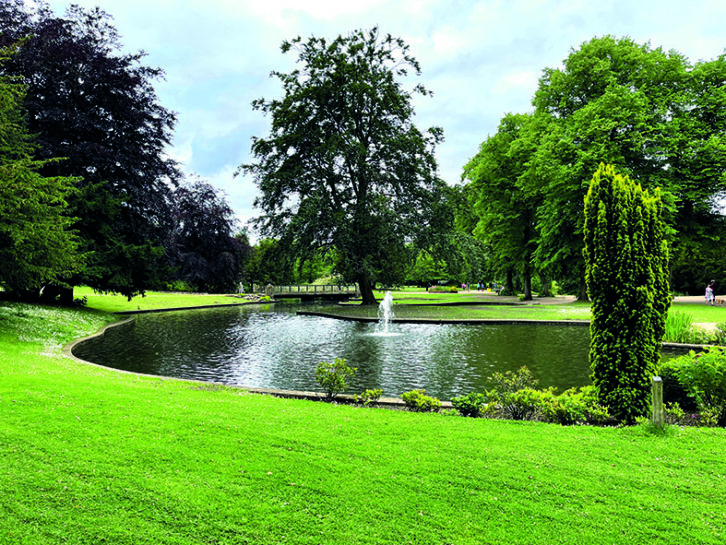
The building now belongs to the University of Derby and at our time of visiting, was closed to the public but when it was built in the late 1700s, this was the largest unsupported dome in the world. Over the years, its many different guises have included being used as a hospital.
We were ready for refreshments, and a place we’ve been to before is the café above Hargreaves and Son homeware and kitchenware shop, on Spring Gardens. Kay enjoys a wander around the classy shop downstairs, and there’s an almost ‘olde world’ atmosphere in the café.
Traditional shops
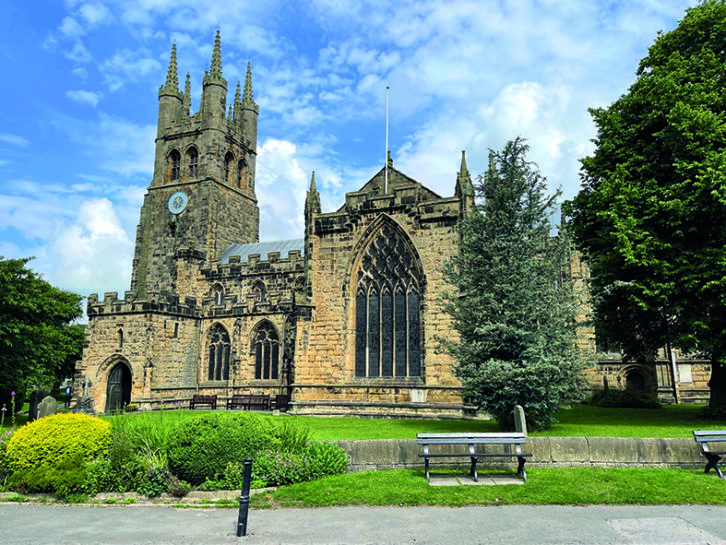
A short trip the next day took us to Tideswell, or Tidza, as it’s known locally. As well as being an attractive village it has a huge church (for the size of the place), dedicated to John the Baptist and known as the Cathedral of the Peak.
After Bakewell, Tideswell is the largest settlement in the Peak District. Although there’s not much here in terms of tourist attractions, it is a thriving village and has a number of traditional shops – butchers, greengrocers and so on – and pubs, chip shops and cafés (we enjoyed a coffee at High Nelly’s, on Bank Square, where I was tempted by a rather agreeable bacon sandwich).
Our next stop was Eyam (pronounced “Eem’), a handful of miles away. The village prospered centuries ago from lead mining, but its biggest claim to fame is how it came to be known as the Plague Village. The story is especially poignant, give the times we are all living through.
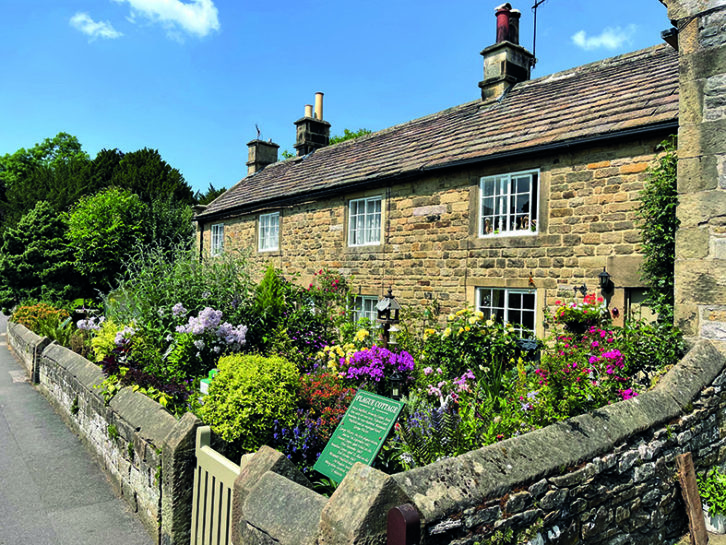
In 1665, a flea-infested bundle of cloth arrived from London at the workshop of the village tailer, Alexander Hadfield. Within a week, Hadfield;s assistant George Vickers was dead, and other members of the household soon followed.
The disease spread rapidly through the village and the residents turned to local clergy, William Mompesson and Thomas Stanley, for guidance.
Going into quarantine
They introduced a number of measures to try to stop the spread, which included quarantining the whole village, among other things. Sound familiar? The plague ran for more than a year and although there is no definitive number of victims, the church records 273 deaths from the disease.
The village is home to Eyam Hall, a Jacobean manor house built by local landowner Thomas Wright as a wedding fit for his son John and daughter-in-law Elizabeth in 1672. It remains in the Wright family’s ownership, and these days, is a popular wedding and events venue.
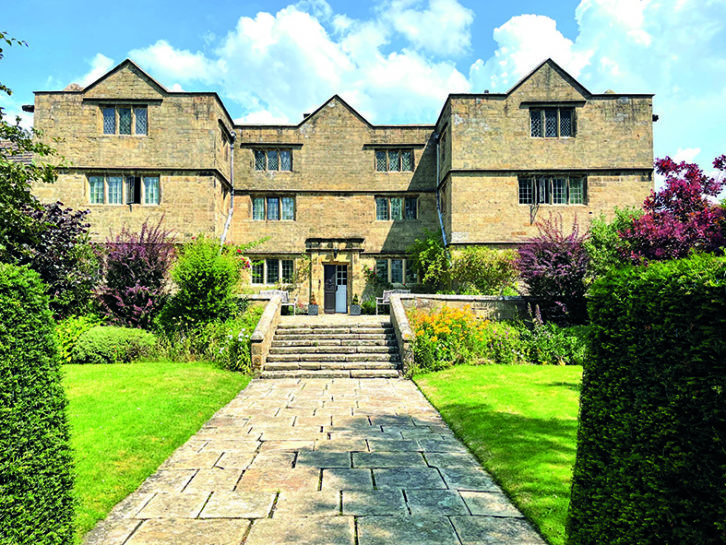
Unfortunately, Eyam Museum (near the main car park, which has no height barrier) was closed when we visited, but when open, this fascinating museum provides a history of the village.
The church, however, was open, where you can see the record of deaths on display, as well as a history of the event and some extraordinary stories. A fine stained glass window makes an impressive permanent memorial.
After visiting the church, Kay and I made the steep-climb to Mompesson’s Well, half a mile from the church. If you are less able, I would suggest you avoid this walk!
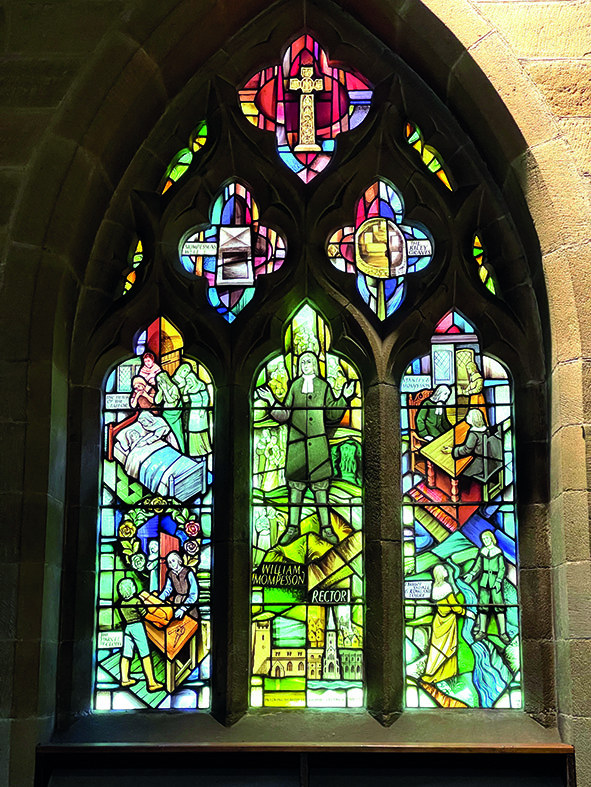
The well is historically significant. Together with the Boundary Stone, it was where supplies for the villages were left during the quarantine. In return, money (soaked in vinegar, thought to kill the plague) was left for the suppliers.
The Riley Graves, half a mile to the east of Eyam, tell just one tragic story of the plague. In the space of a week, Elizabeth Hancock lost her husband and six children to it. She buried them herself, taking the bodies singlehandedly from their home at Riley Farm to a small patch of land on the nearby hillside.
It is thought Elizabeth brought the disease to her family after helping to bury another villager’s body. What she couldn’t have imagined is that 350 years later, people would be visiting the graves and admiring the stunning views.
Detour to the viaduct
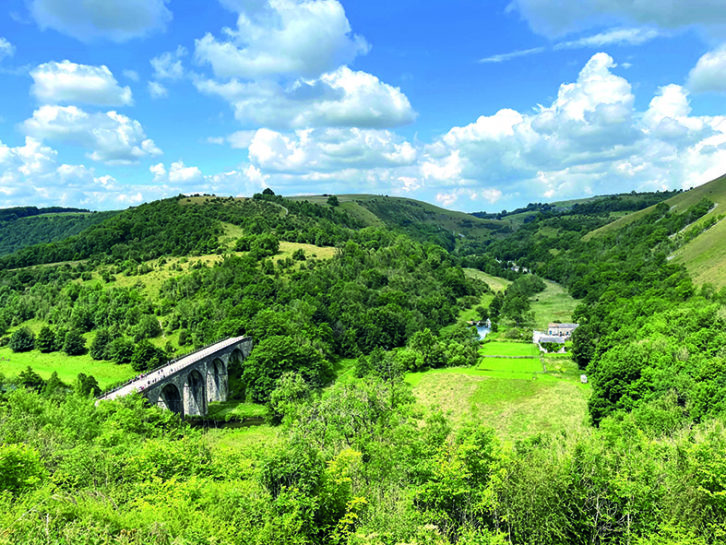
Our trip back to the campsite took us via Monsal Head; not the most direct route, but well worth the detour. The plan was a brief stop, soaking up the views, but I wasn’t satisfied with just looking, so I followed the two miles or so circular route that took me from way above dramatic Headstone Viaduct to walking beneath it and back.
Next day we spent a lazy morning, preparing for a superb Sunday lunch at the nearby Church Inn, in Chelmorton, just strolling distance from the campsite. None of us were disappointed!
Our plan for the afternoon was to walk from the site to the Monsal Trail, a cycling, walking and riding route running for about eight and a half miles from Topley Pike Junction to Coombs Viaduct, south-east of Bakewell. It follows the route of the former Matlock to Buxton railway, which closed in 1968. The trail was opened in 1981 and passes through six tunnels (mainly well lit) and across Headstone Viaduct, which crosses the River Wye at Monsal Head.
Kay and I have walked that trail a few times, but on this visit, we weren’t so energetic, and ‘only’ walked the circular route from the site, on a bridle path to Blackwell Mill, on to Miller’s Dale and back up the B6049 towards the site.
The latter option wasn’t the best – there are no pavements at the side of the B6049, so if we did it again, we’d take a different way back. I subsequently found a footpath marked on the OS map, which leads from the trail near Miller’s Dale directly to the back of the campsite.
Sadly, as they always do, our final day arrived far too soon, but we still had plans. A nine-mile drive to the south in Mike and Janet’s car took us to English Heritage’s Neolithic henge at Arbor Low and Gib Hill Barrow. There is a small area for parking on the track leading to the farm (the yard of which you pass through to get to the site, and you’re asked to pay a ‘toll’ of £1 to do so, although entry to the site itself is free).
Accessing the site does involve walking along a rough track and through a field. Set high on a hill within an earthen bank and ditch, a circle of some 50 limestone slabs surrounds a central ‘cove’. If you are up to the walk, it’s well worth it for the panoramic views, if nothing else.
Cheese, please
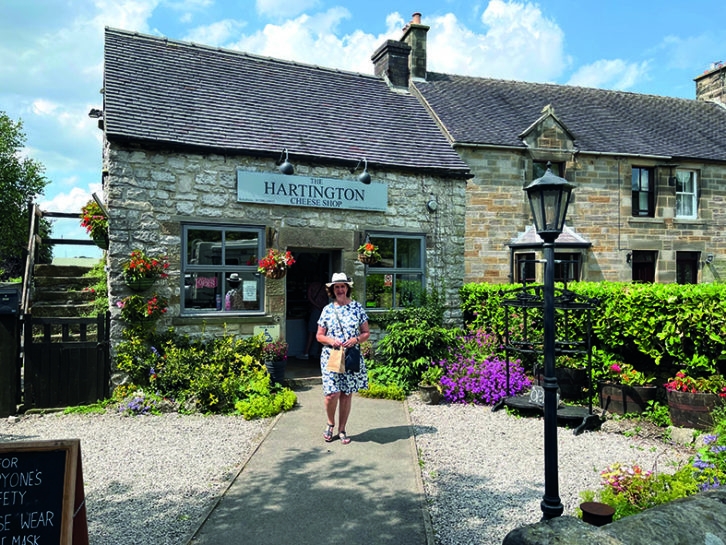
Our final stop was at Hartington, in particular to visit the cheese shop. A creamery was first established in Hartington in the 1870s. By the 1930s, it was one of a handful of creameries that could legally produce Blue Stilton.
The creamery closed in 2009, but in 2012, the new Hartington Creamery at Pikehall Farm, a few miles from the village, opened.
The outlet for the cheese is The Old Cheese Shop, in the centre of Hartington. There’s a huge variety of different cheese on sale here, and we came away with a very nice Peakland White with smoked tomato and garlic. It didn’t last long!
Heading for home after a great trip, we reflected on having had a splendid few days in an area we know and love. As a bonus, it was relaxing to visit places a little off the beaten track for a change.
TOUR ESSENTIALS:
Way to go
From Buxton, take the A6, heading towards Bakewell. Half a mile after the junction on the right with the A5270 (signposted Brierlow Bar and Ashbourne), turn left (a brown campsite sign gives warning). Follow the lane for about 300m and the campsite entrance is on the left.
From Bakewell, take the A6 towards Buxton; 100m after the junction with the B6049 (signposted Miller’s Dale and Tideswell), turn right onto the above lane.
Where we stayed
Beech Croft Caravan Park & Campsite
- Blackwell in the Peak, Taddington, Nr Buxton, Derbyshire, SK17 9TQ
- Web www.beechcroftfarm.co.uk
- Open All year
- Pitches 30
- Charges (pitch+2+hook-up) From £24
This family-run campsite has 30 spacious hardstanding pitches, each with 16A, water tap and TV aerial socket.
The amenities provided (toilets, showers, dishwashing and laundry room) are all very modern and spotless.
A small shop at reception sells the basics, and can provide local information. The site also sells Calor Gas and Campingaz.
Wi-Fi is free, but do bear in mind ‘fair usage’ and the fact that the campsite is in a wonderful rural setting. As a result, the connection is not always very fast.
Food and drink
- The Church Inn
- High Nelly’s Café, 07906 160 691
- Hargreaves and Son
Find out more
If you liked this… READ THESE:
Central England: Practical Motorhome Travel Guide
Pedal Power: six great cycle trails in Britain
10 top tips for buying a used motorhome
If you’ve enjoyed reading this article, why not get the latest news, reviews and features delivered direct to your door or inbox every month. Take advantage of our brilliant Practical Motorhome magazine SUBSCRIBERS’ OFFER and SIGN UP TO OUR NEWSLETTER for regular weekly updates on all things motorhome related.
When the Devonshire Dome was built in the late 1700s, it was the largest unsupported dome in the world
